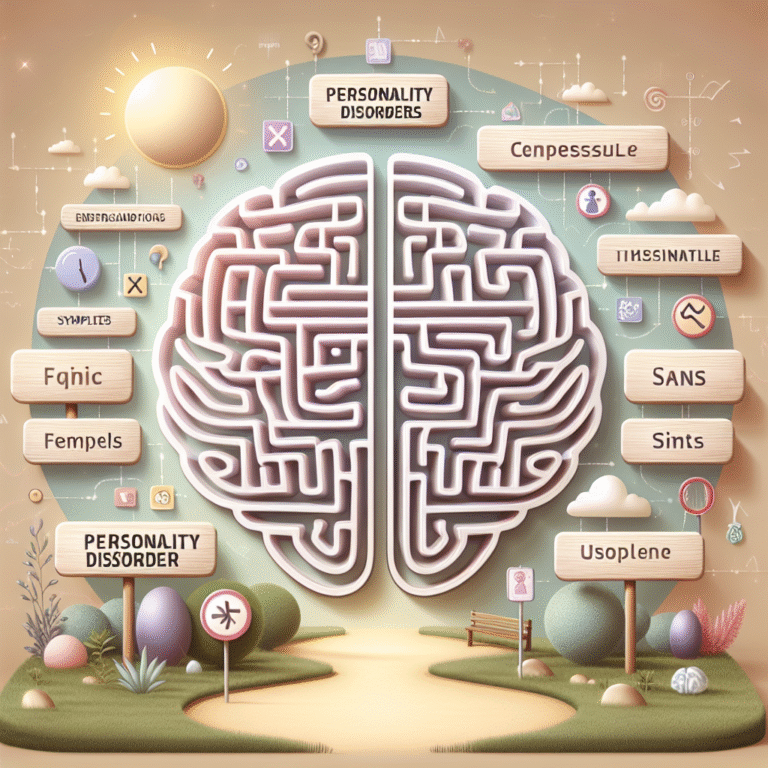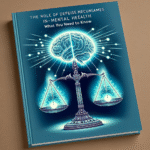
The Science of Seduction: Understanding the Psychology Behind Addiction
Introduction
In an increasingly interconnected world, the dynamics of human relationships have evolved dramatically. While connection and intimacy are often celebrated, there lurks a darker side to human desire—one that leads to addiction. This is the intriguing intersection where The Science of Seduction: Understanding the Psychology Behind Addiction takes center stage.
Imagine standing at the edge of a cliff, peering into the abyss of addiction. Unlike other forms of allure, addiction possesses a unique power over the human psyche, engaging our hearts and minds in a captivating, yet often destructive, dance. The intricacies of our emotional biology intertwine with societal influences to create a potent cocktail of attraction and dependency.
As we embark on this exploration, we will dissect the multifaceted layers of seduction, addiction, and psychology. By delving into various case studies, scientific research, and psychological theories, we aim to unravel the mysteries surrounding our most compelling human desires.
The Cunning Allure of Addiction
Addiction, as many know, is not confined to substances like alcohol or drugs. It beautifully—and perilously—manifests in various forms: from gambling and social media to toxic relationships. The Science of Seduction: Understanding the Psychology Behind Addiction digs deep into the underlying factors that contribute to these compulsive behaviors.
Understanding the Brain’s Wiring
Our brains are wired for pleasure—a fact that plays a significant role in addiction. The limbic system, often referred to as the brain’s reward center, is crucial in how we experience pleasure. When we engage in behaviors that we find rewarding—like eating, exercising, or even romantic relationships—the brain releases dopamine, a neurotransmitter responsible for feelings of pleasure and satisfaction.
The challenge arises when those pleasurable stimuli become overwhelming, driving us toward repetitive, compulsive actions. Here’s a simple table highlighting how various behaviors trigger the brain’s reward system:
| Behavior | Dopamine Release | Risk of Addiction |
|---|---|---|
| Substance Use | High | Very High |
| Social Media | Moderate | High |
| Gambling | High | Moderate |
| Romantic Relationships | Moderate | Low to Moderate |
This interaction between dopamine and behavior forms the foundation of The Science of Seduction: Understanding the Psychology Behind Addiction. Misalignments in this system can lead to an unhealthy fixation on behaviors that offer a fleeting sense of fulfillment.
Case Study: The Social Media Effect
Social media platforms are designed to keep users engaged, leveraging the brain’s reward pathways to create a cycle of addiction. A notable case study involved a 25-year-old woman named Sarah, who became increasingly reliant on social media for validation.
Initially, Sarah felt invigorated by likes and comments, akin to the high produced by substances. However, over time, she found herself scrolling for hours, neglecting relationships and responsibilities. When researchers monitored her brain activity, they discovered significant Dopamine spikes during notifications, illustrating how modern seduction tactics manipulate our psychology.
The Role of Emotional Bonding
Another crucial aspect of The Science of Seduction: Understanding the Psychology Behind Addiction is the role of emotional connections in fostering compulsive behaviors. Emotional attachment can initially create a sense of safety and belonging, but cravings for that connection can turn into an insatiable need.
The Psychology of Love and Dependency
In romantic relationships, attachment theory plays a vital role in understanding why individuals can become addicted to the thrill of love or companionship. The fear of losing that connection ignites anxiety, pushing individuals into a cycle of dependence.
Case Study: The Toxic Relationship Cycle
Consider the case of Mark and Lisa, who exhibited classic patterns of relationship addiction. Initially, their connection sparked joy and excitement—characteristics of an ideal relationship. As the relationship progressed, however, Mark’s insecurities led to jealousy and controlling behavior, trapping Lisa in a cycle of anxiety and heightened affection.
When they experienced "highs," such as reconciliation after conflict, it fueled a cycle akin to addiction. Researchers studying their behavior noted brain patterns similar to those seen in individuals with substance dependencies, reinforcing how emotional bonding can be closely tied to addiction.
Charts: The Cycle of Addiction in Relationships
The following chart illustrates the cyclical nature of emotional addiction in relationships:
+-----------------+
| Emotional High |
| (Reunion) |
+-----------------+
|
V
+-------------------+
| Emotional Low |
| (Conflict, Fear) |
+-------------------+
|
V
+---------------------+
| Need for Connection |
| (Clinginess) |
+---------------------+This cyclical pattern exemplifies how The Science of Seduction: Understanding the Psychology Behind Addiction reveals the potency of emotional ties in keeping individuals bonded—even when detrimental.
The Impact of Environment and Culture
The seduction of addiction is not singularly a personal battle; environmental and cultural factors play a pivotal role. In societies where certain behaviors are normalized, the propensity toward addiction can increase significantly.
Cultural Acceptance of Risky Behaviors
In many cultures, risking behaviors such as binge drinking, gambling, or even infidelity may be socioculturally accepted. This can encourage addictive behaviors. For instance, college culture often glorifies alcohol consumption as a rite of passage, seducing countless young adults into unhealthy habits.
Case Study: College Campus Life
A study conducted on college campuses revealed that students engaging in binge drinking often reported feeling pressured by their peers. The immediate gratification and social bonding experienced during these events propelled a cycle of dependency.
Participants noted that alcohol provided an escape from anxiety, linking directly back to our discussions of brain chemistry. When surveyed, those who experienced the seduction of drinking were twice as likely to develop patterns of addiction over their college years compared to those who abstained.
The Intersection of Genetics and Choice
The interplay of genetics and choice further complicates The Science of Seduction: Understanding the Psychology Behind Addiction. Genetics can influence susceptibility to addiction, but choices made in response to environmental stimuli are equally significant.
Genetic Factors in Addiction
Research has uncovered insights into the role of genetics in addiction, citing that individuals with a family history of addiction may possess DNA profiles that increase their risk. Specific genes, such as those involved with dopamine receptors, can predispose individuals to experience heightened pleasure from certain behaviors.
Case Study: The Family History Factor
An extensive longitudinal study followed families with a history of addiction. Among those observed, individuals with a parent who struggled with substance abuse were more likely to experiment with drugs and alcohol, further emphasizing how genetic predispositions intersect with the environment.
Conclusion
As we uncover the layers of The Science of Seduction: Understanding the Psychology Behind Addiction, we recognize that seduction and addiction are far more than simple choices or character flaws. They are deep-rooted psychological phenomena involving biology, emotional connection, environmental pressures, and genetic predispositions.
Understanding these elements is crucial not only for those struggling with addiction but also for society as a whole. By comprehending the psychological motivations that drive addiction, we can work towards more effective interventions, support systems, and cultural shifts that promote overall well-being.
Ultimately, the more we learn about the seductive nature of addiction, the better equipped we become to address and manage its impacts. Encouraging awareness and fostering supportive environments can help break the chains of addiction, transforming seduction from a path toward dependency into one of healthy, fulfilling connections.
FAQs
1. What are the primary factors contributing to addiction?
The main factors contributing to addiction include biological predispositions (genetics), emotional attachments, environmental influences (peer pressure, cultural norms), and psychological conditions (such as anxiety or depression).
2. Can addiction be reversed?
Yes, with appropriate interventions, therapy, and support, many individuals can overcome addiction, leading to healthier relationships with themselves and others.
3. How can understanding the psychology of addiction help prevent it?
By understanding the psychological triggers of addiction, individuals, families, and communities can create strategies and support systems that help mitigate risk factors and promote healthier coping mechanisms.
4. Is addiction only related to substance use?
No, addiction can manifest in various ways, including behavioral addictions like gambling, social media, shopping, and even relationships.
5. How is social media connected to addiction?
Social media can trigger release of dopamine similar to substances, leading to compulsive use patterns that mimic addiction behaviors. Constant notifications and validation can create a cycle of dependency.
By melding psychological insights with real-world applications, The Science of Seduction: Understanding the Psychology Behind Addiction offers a comprehensive lens through which we can analyze and address this complex issue. Understanding the nuances of our psyche not only enhances our comprehension of addiction but empowers us to influence change in ourselves and our communities.


















